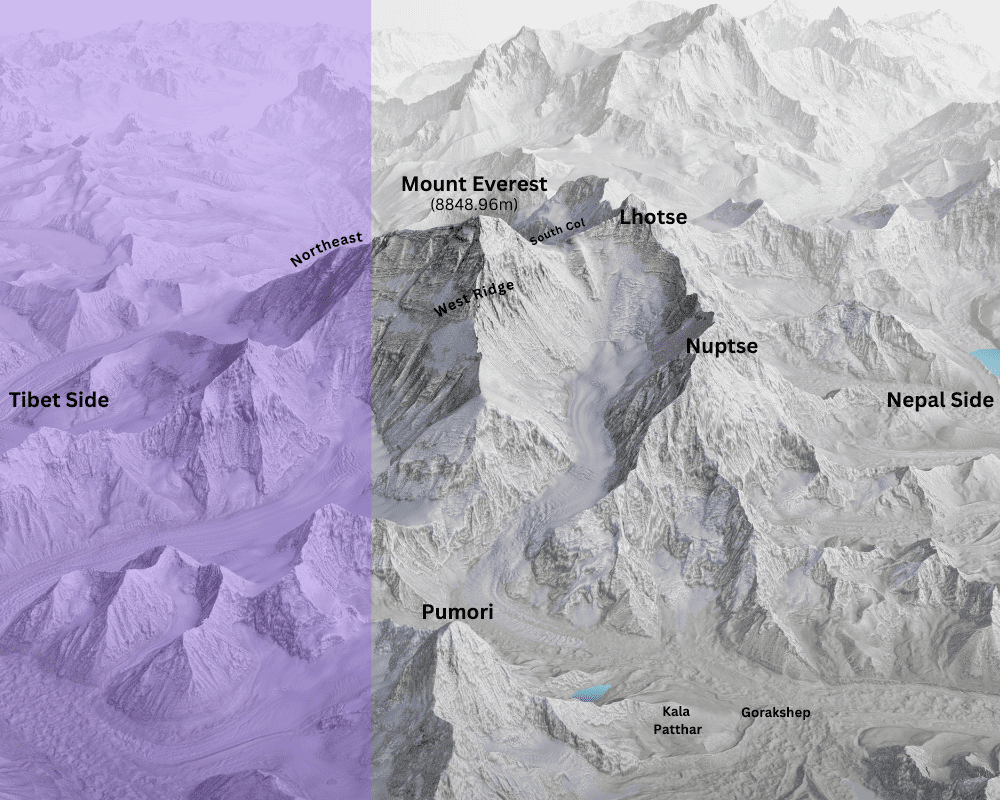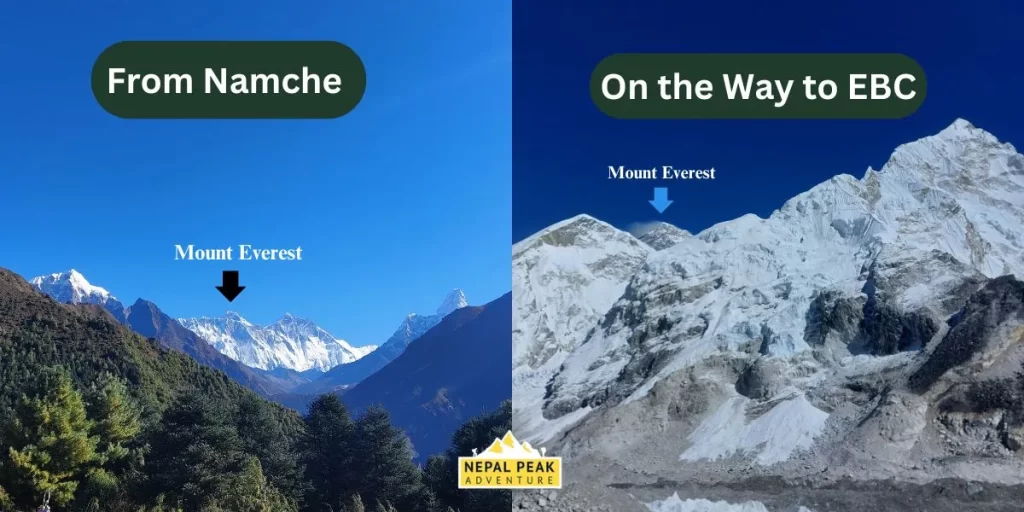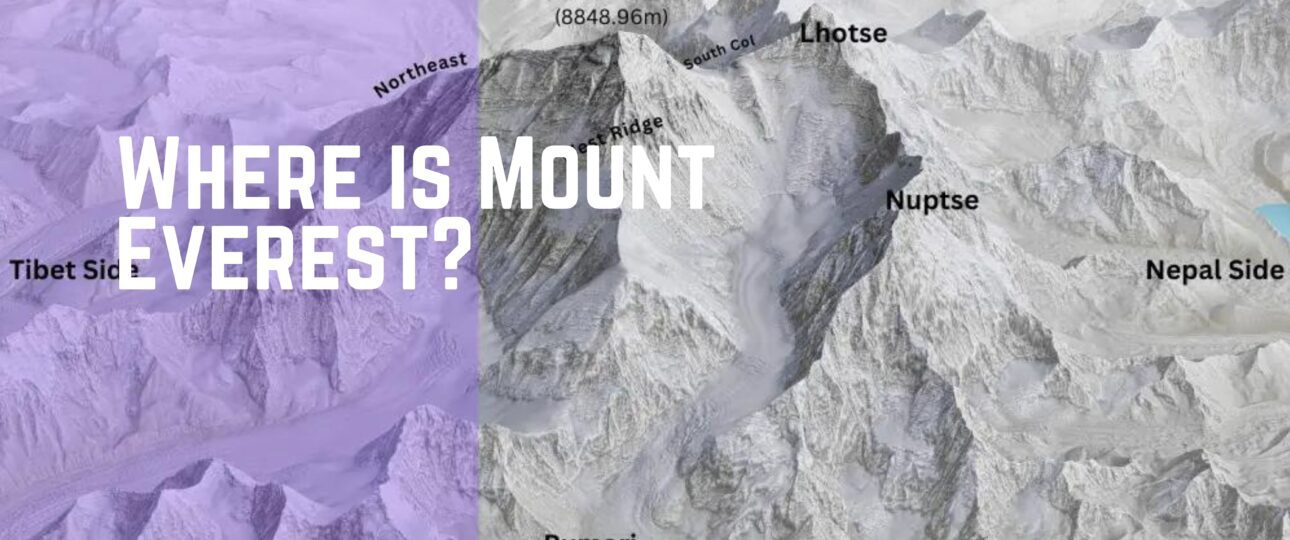Discover Where Mount Everest is Located
Have you ever wondered where is Mount Everest, the tallest mountain on Earth located? Let’s dive into its whereabouts!
Mount Everest stands tall in the Great Himalayas, a massive mountain range in southern Asia. It’s right on the border between Nepal and Tibet, situated at coordinates 27°59′ North latitude and 86°56′ East longitude, which makes the top peak under Sagarmatha Zone of Nepal’s Khumbu Region.

The locals have given Mount Everest some beautiful names. In Nepal, it’s called “Sagarmatha,” which means “Forehead of the Sky,” And in Tibet, it’s known as “Chomolungma,” which translates to “Holy Mother.” These names reflect the deep respect and reverence people have for this awe-inspiring mountain.
Geologically speaking, Mount Everest was formed millions of years ago when tectonic plates collided, pushing the Earth’s crust upward to create the Himalayas. It’s a living testament to the incredible forces of nature.
Measuring Everest’s exact height has been a bit of a challenge over the years. But today, we know it stands at a whopping 8,848.96 meters (29,032.021 feet) above sea level. That’s like stacking almost 20 Empire State Buildings on top of each other!
A more detailed blog is written about “How tall is Mount Everest? Understanding the majestic height”.
How to Know Which is Mount Everest
Identifying Mount Everest amidst the Himalayan landscape requires knowledge of its distinct features and surrounding landmarks. The mountain’s towering height, snow-covered peak, and distinctive shape set it apart from other peaks in the region. Look for a towering peak with a distinctive triangular shape, often shrouded in snow and ice. Its prominent height and silhouette set it apart from the surrounding mountains.
Pay attention to features such as the distinctive summit pyramid and the surrounding landscape to confirm that you have indeed captured Mount Everest in all its glory.
When approaching from the Nepal side, the mountain is typically visible from the Everest region, including popular trekking destinations like Namche Bazaar and Everest Base Camp. From Tibet, Everest is visible from viewpoints such as Rongbuk Monastery.

Geology and Surrounding Peaks
Mount Everest, like the other peaks in the Himalayan range, has a fascinating geological history that dates back millions of years. The Himalayas were formed as a result of the collision between the Indian Plate and the Eurasian Plate, a process known as continental drift
Everest is composed of various layers of rock, including metamorphic schists, gneisses, and igneous granites. The mountain is surrounded by other prominent peaks, such as Lhotse, Nuptse, and Changtse, which form part of the awe-inspiring Himalayan range. These peaks create a stunning backdrop for Everest’s majestic presence.
Glaciers and Glacial Features:
The Himalayas are home to numerous glaciers, including the Khumbu Glacier, which flows from the Western Cwm (cirque) between Everest and Lhotse. Glacial features such as moraines, icefalls, and seracs are common in the Everest region and add to the rugged and dynamic landscape. These glaciers play a crucial role in shaping the surrounding terrain and providing a vital source of water for the region’s rivers and ecosystem



